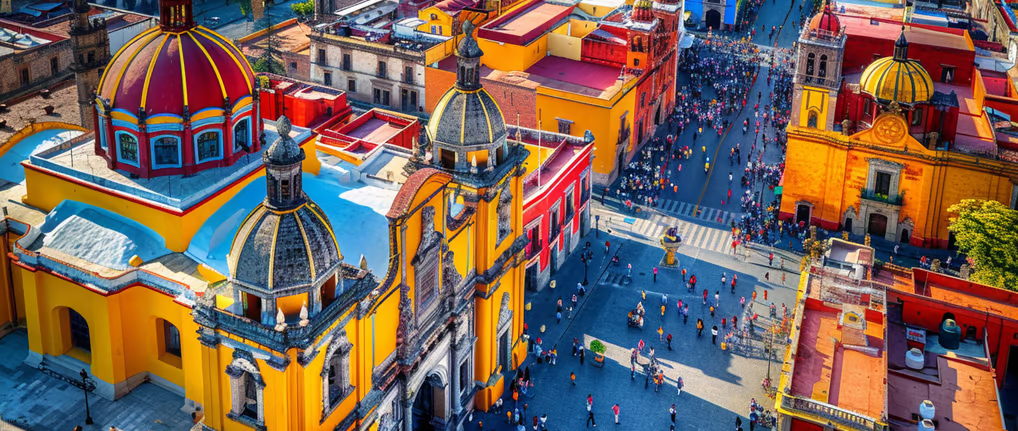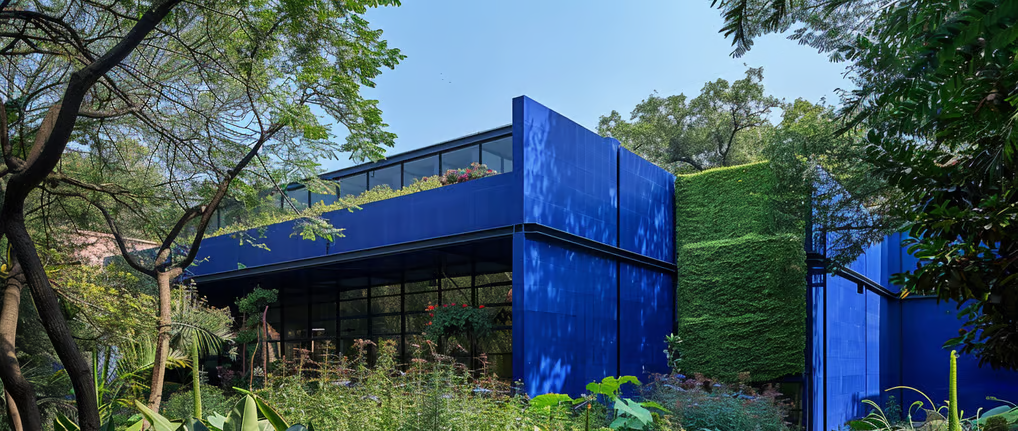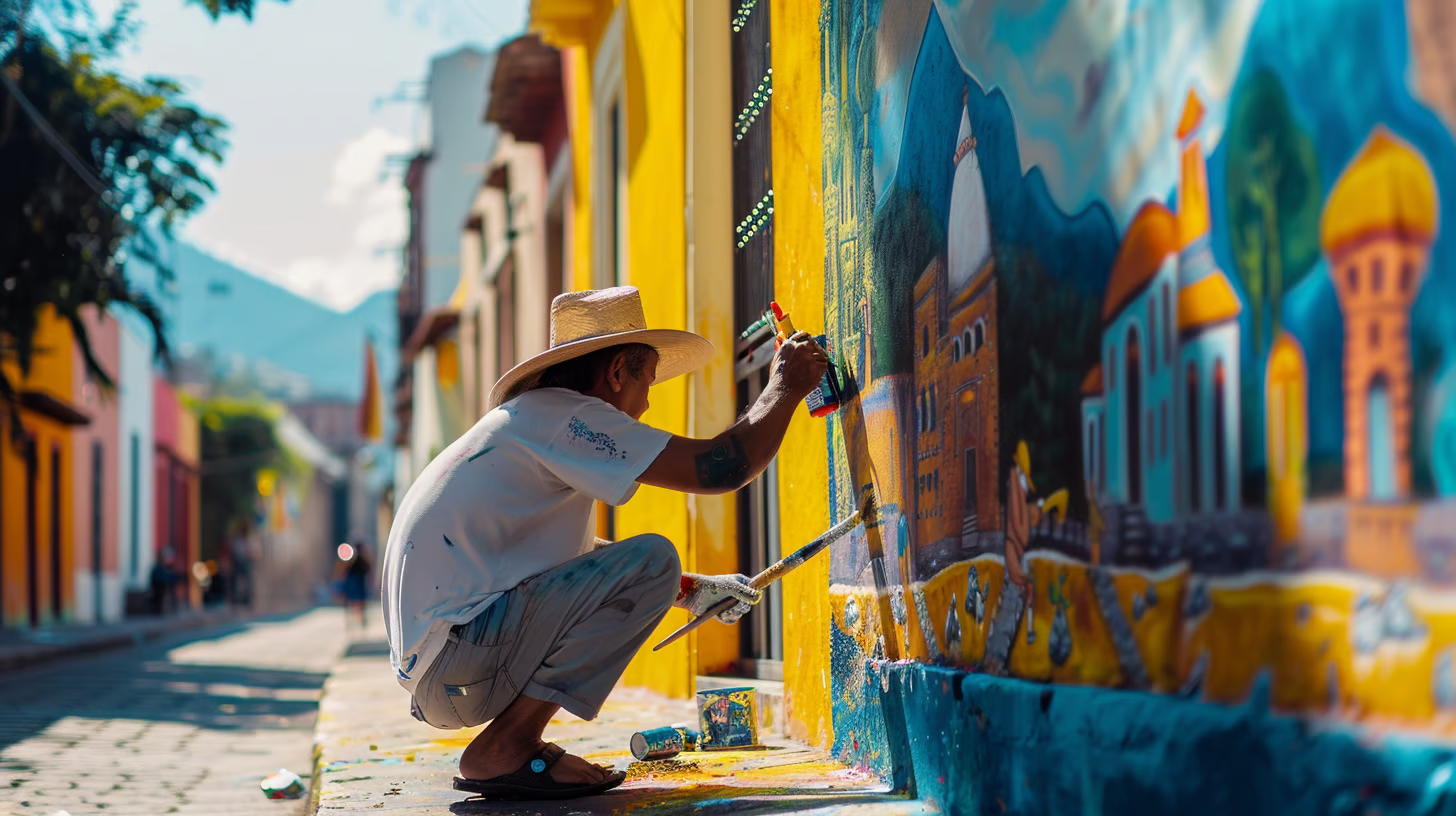The Artistic Soul of Mexico: Muralists, Museums, and Modern Art
Delve into Mexico's rich artistic tapestry, where the soul of the nation is captured in vibrant murals, world-class museums, and dynamic modern art, each telling a story of heritage, struggle, and beauty.

Mexico is a country rich in culture, history, and artistic expression. From the awe-inspiring murals that adorn its streets to the remarkable museums that house countless masterpieces, Mexican art is a window into the nation's soul. In this article, we will delve into the captivating history, vibrant present, and promising future of Mexican art.
Unveiling the History of Mexican Art
The roots of Mexican art run deep, stretching back to pre-Hispanic times. The ancient civilizations that called Mexico home, such as the Mayans and Aztecs, left behind a legacy of magnificent art. Their delicate pottery, intricate murals, and symbolic sculptures still inspire artists today.
However, the arrival of Spanish colonialists in the 16th century had a profound impact on Mexican art. The fusion of indigenous and European artistic traditions created a unique and powerful visual language that continues to shape Mexican art to this day.
One fascinating aspect of Mexican art is the vibrant and diverse range of colors used by artists throughout history. From the vivid blues and yellows of the Mayan murals to the rich reds and earthy tones of the colonial period, color has always played a significant role in Mexican art. These vibrant hues not only add visual appeal but also carry symbolic meaning, representing the country's rich cultural heritage and its connection to the natural world.
Another notable characteristic of Mexican art is its strong emphasis on storytelling and narrative. Whether through murals, paintings, or sculptures, Mexican artists have long used their creations to convey stories, myths, and historical events. These artworks serve as visual records of the country's complex past, capturing the struggles, triumphs, and cultural identity of the Mexican people.
Moreover, Mexican art has always been deeply rooted in spirituality and religious beliefs. The ancient civilizations revered deities and spirits, and this reverence continued during the colonial period with the introduction of Christianity. The fusion of indigenous and Catholic traditions gave rise to a unique form of religious art, blending elements of both worlds. The iconic image of the Virgin of Guadalupe, for example, is a testament to the enduring influence of religion on Mexican art.
As the centuries passed, Mexican art continued to evolve, incorporating new influences and styles. The Mexican Revolution in the early 20th century sparked a wave of artistic expression, with artists like Diego Rivera and Frida Kahlo using their work to reflect the social and political realities of their time. Today, Mexican art remains a vibrant and dynamic force, with contemporary artists pushing boundaries and exploring new mediums.

The Rise of Muralism in Mexico
One of the most significant movements in Mexican art is muralism. Born out of the aftermath of the Mexican Revolution, muralism sought to bring art to the masses and convey powerful social and political messages. Diego Rivera, David Alfaro Siqueiros, and Jose Clemente Orozco were at the forefront of this movement, using monumental murals to depict Mexican history, struggles, and triumphs. Their work can be seen in public spaces across the country, such as the National Palace in Mexico City and the Palacio de Bellas Artes.
The impact of muralism on Mexican society cannot be overstated. In a country grappling with the aftermath of a revolution, muralism provided a visual narrative that connected the people to their history and identity. The murals served as a form of public education, teaching the masses about their heritage and the struggles their ancestors endured. Through their art, Rivera, Siqueiros, and Orozco aimed to inspire unity, pride, and a sense of collective purpose among the Mexican people.
Diego Rivera, known for his grandiose and intricate murals, often depicted scenes from Mexican history, incorporating both indigenous and European influences. His murals at the National Palace in Mexico City, for example, showcase the history of Mexico from pre-Columbian times to the present day. Through his art, Rivera aimed to celebrate the rich cultural heritage of Mexico and highlight the ongoing struggles for social justice and equality.
David Alfaro Siqueiros, on the other hand, used his murals to address contemporary social and political issues. His work often depicted the plight of the working class and the exploitation they faced. Siqueiros' murals at the Palacio de Bellas Artes, for instance, portray the struggles of the Mexican people against imperialism and capitalism. His powerful and emotive style aimed to awaken a sense of social consciousness and ignite a desire for change among the viewers.
Jose Clemente Orozco, another prominent muralist, focused on themes of human suffering and the resilience of the Mexican people. His murals, such as those at the Hospicio Cabañas in Guadalajara, depict the struggles of marginalized communities and the resilience they exhibit in the face of adversity. Orozco's use of bold colors and strong symbolism evokes a sense of empathy and solidarity, urging viewers to reflect on the human condition and the need for social justice.
Today, muralism continues to be an integral part of Mexican culture and identity. The legacy of Rivera, Siqueiros, and Orozco lives on in the vibrant murals that adorn the streets and buildings of Mexico. These murals not only beautify public spaces but also serve as a constant reminder of the country's history, struggles, and aspirations. They are a testament to the power of art to inspire, educate, and unite a nation.

Exploring Mexico's Museums
Mexico's museums play a crucial role in preserving and celebrating its artistic heritage. The National Museum of Anthropology in Mexico City is a must-visit for those interested in pre-Hispanic art, housing a remarkable collection of artifacts that span thousands of years. The Frida Kahlo Museum, located in the vibrant neighborhood of Coyoacan, provides an intimate look into the life and works of this iconic Mexican artist.
For a taste of contemporary Mexican art, head to the Museo Tamayo in Mexico City or the Museo de Arte Moderno in Monterrey. These museums showcase the work of renowned Mexican artists, as well as international contemporary art exhibitions.
The Evolution of Modern Art in Mexico
Mexican art has always been in a state of constant evolution, adapting to the changing times. The transition from traditional art to modern art was marked by artists such as Rufino Tamayo and Frida Kahlo, who broke free from established norms and pushed boundaries with their innovative styles and bold subject matter.
Today, a new generation of Mexican artists is redefining the art scene, incorporating elements of street art, pop culture, and technology into their work. Artists like Bosco Sodi and Gabriel Orozco are gaining international recognition, showcasing the diverse and dynamic nature of modern Mexican art.
The Future of Mexican Art
The future of Mexican art is bright, with emerging trends shaping the artistic landscape. Indigenous artists are reclaiming their cultural heritage and infusing it into their creations, bringing to light the often-overlooked narratives of their communities. Additionally, Mexican art is exerting a global influence, with artists like Alejandro González Iñárritu and Guillermo del Toro making waves in the world of film and cinema.
As travelers, we have the unique opportunity to experience firsthand the artistic soul of Mexico. Whether it's marveling at the murals in Mexico City, exploring the galleries of Oaxaca, or immersing ourselves in the vibrant art festivals held throughout the country, let us embrace the beauty and power of Mexican art.
Step Into The Artful Soul of Mexico
Mexico's artistic soul is alive and thriving, beckoning us to explore, appreciate, and contribute to its rich tapestry. Let us immerse ourselves in the history, visit the museums, and engage with the artists shaping contemporary Mexican art. Through our collective appreciation and support, we can ensure that the artistic soul of Mexico continues to inspire generations to come.
So pack your bags, book a flight, and get ready to embark on an artistic journey through the vibrant streets and captivating galleries of Mexico. Discover the stories that art tells, the emotions it evokes, and the connections it forges. The artistic soul of Mexico awaits, ready to leave an indelible mark on your heart and mind.